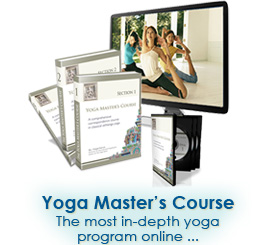[ Excerpt from The Science of Yoga, page 482 ]
The outline of the indriyas, or sense organs given may, for the Westerner, at first glance may seem a bit perplexing. Western science has clearly defined five senses, and all of these revolve around the issue of 'sensation': sight, sound, hearing, tasting and tactile feeling. When we speak of pratyahara, we must enlarge our vision and realize that we have to deal with much more than just five gross senses. Swami Gitananda Giri points out that:
"These [senses] include not only the outer senses, but also a whole group of 'inner sensations', which could be typified by the term antarendriya. This specific term though, is reserved for a much higher meaning than 'inner sensations' or receptors of inner sensations. It is used in yoga and vedanta to mean 'the faculty in man working upwards through the mind in its evolutionary process'."
Though these other senses may fall outside of the framework of Western scientific thought, the Eastern spiritualist is acutely familiar with them, as Swamiji explains:
"They are senses by every means of classification we know, using specific brain areas for their contact with the higher centres of action in the mind. That they cannot be 'scientifically' demonstrated may be a fact, but to dismiss them, as the Western scientist has, is to dismiss the whole higher nature of man. Because one cannot see the wind, he should not dismiss it as a fact. One can observe the action of the wind... [Similarly,] man cannot 'see' God, but he sees the action of creation, the sustaining force, and the flux of constant change everywhere. To the yogi, these are the movements of God."
According to Dr. Swami Gitananda Giri Gurumaharaj, the 18 Senses of man are:
Lower Senses:
- Sense of sight
- Sense of sound
- Sense of smell
- Sense of taste
- Sense of touch and pressure
- Sense of warmth
- Sense of cold
Higher Senses:
- Sense of pain
- Sense of muscular co-ordination
- Sense of balance
- Sense of thirst, hunger and sex
- Sense of inner sight (clairvoyance)
- Sense of inner hearing (clairaudience)
- Sense of inner smell
- Sense of inner taste
- Psycho-kinetic sense
- Psycho-sympathetic senses of sympathy, empathy, pity
- Sense of higher compassion
[Continued...]
---------------------
NOTE: This yoga article is an excerpt from The Science of Yoga, an online yoga training program with streaming yoga videos and 600 pages of step-by-step yoga instruction.

"The Science of Yoga is a course worthy of
leather binding and an honored place in the
finest libraries in the world
... It is indeed a masterful work."
Dr. John Michael Christian
AwakeningWithYoga.com
Learn More About
The Science of Yoga Course
|






